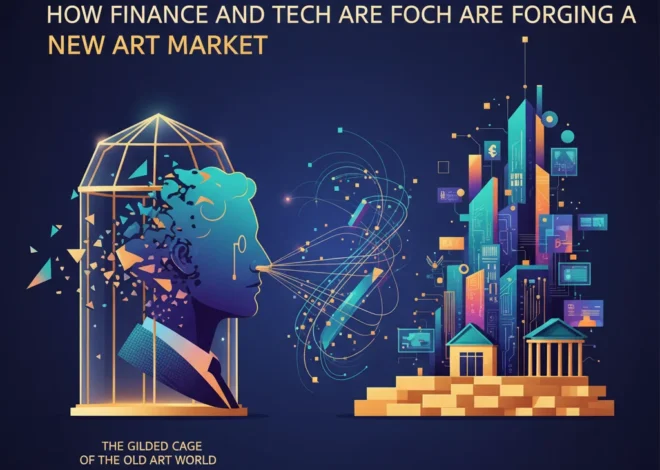
Beyond the Shark Tank: How Community Finance is Reshaping the Future of Banking and Investment
In the intricate world of modern finance, where algorithms execute trades in microseconds and global markets react to whispers of economic change, a darker, more predatory ecosystem thrives in the shadows. It’s the world of loan sharks and high-interest payday lenders, a realm that traps millions in vicious cycles of debt. But a powerful counter-movement is gaining momentum, not in the gleaming towers of Wall Street or the City of London, but in community halls and local council offices. A recent initiative in Stoke-on-Trent, where a businessman and the city council have launched a new credit union, serves as a potent case study for a seismic shift in banking, investing, and financial technology.
This isn’t just a feel-good local story; it’s a microcosm of a revolution in the making. It signals a growing demand for ethical finance, presents a new frontier for fintech innovation, and offers a compelling thesis for socially responsible investing. For finance professionals, investors, and business leaders, understanding this groundswell isn’t just about corporate social responsibility—it’s about recognizing a fundamental change in the economic landscape.
The Anatomy of a Debt Trap: Deconstructing Predatory Lending
To appreciate the significance of the community finance movement, one must first understand the problem it aims to solve. Predatory lending, whether from illegal loan sharks or legal-but-exorbitant payday loan companies, operates on a simple, brutal model: exploiting financial desperation. These lenders target individuals who are often excluded from mainstream banking services due to poor credit or lack of financial history.
The mechanics are devastating. A small, short-term loan comes with an astronomical Annual Percentage Rate (APR) that can easily exceed 400%. According to research from The Pew Charitable Trusts, the average payday loan borrower is indebted for five months of the year, paying an average of $520 in fees to repeatedly borrow just $375 (source). This creates a “debt treadmill,” where the borrower can only afford to pay the interest, forcing them to roll over the principal into a new loan, accumulating more fees and sinking deeper into a financial quagmire. The impact on the broader economy is profound, siphoning wealth from low-income communities, increasing financial instability, and stifling economic mobility.
A Community-Led Counter-Offensive: The Credit Union Model
Enter the humble credit union. In Stoke-on-Trent, businessman Gareth Higgins, in partnership with the city council, has spearheaded the creation of a credit union specifically designed to offer a lifeline to those tempted by loan sharks. As reported by the BBC, this initiative provides an alternative to the crippling interest rates that perpetuate poverty.
Unlike traditional banks, which are for-profit institutions beholden to shareholders on the stock market, credit unions are not-for-profit financial cooperatives. They are owned and controlled by their members—the very people who save and borrow there. This fundamental difference in structure realigns the institution’s entire purpose. The goal isn’t to maximize profit for external investors, but to provide fair and affordable financial services to the member community. Profits, or “surpluses,” are returned to members in the form of lower loan rates, higher savings rates, and improved services.
Below is a direct comparison highlighting the structural differences between these two financial models:
| Feature | Typical Payday Lender | Typical Credit Union |
|---|---|---|
| Ownership Structure | For-profit corporation (often publicly traded) | Not-for-profit cooperative (owned by members) |
| Primary Motive | Maximize shareholder profit | Provide affordable financial services to members |
| Average APR on Small Loans | 300% – 500%+ | 12% – 18% (often capped by regulation) |
| Governance | Board of directors elected by shareholders | Volunteer board of directors elected by members |
| Community Impact | Extracts wealth from the community | Reinvests capital and promotes financial stability within the community |
The Stoke-on-Trent model goes even further, backed by funds from the Police and Crime Commissioner’s office recovered under the Proceeds of Crime Act. This represents a beautifully circular form of economic justice: money seized from criminal enterprises is being used to build a resilient financial system that prevents people from falling victim to illegal lenders in the first place (source).
The Fintech-Fueled Future of Community Banking
The rise of community finance is not a regression to old-fashioned banking; it is a platform for the next wave of innovation in financial technology. Fintech is uniquely positioned to amplify the impact of credit unions and similar institutions, helping them overcome traditional limitations of scale and technology.
Here’s how fintech can be a game-changer:
- Alternative Credit Scoring: Many individuals are denied traditional credit because they lack a FICO score. Fintech firms are developing algorithms that use alternative data points—such as rent payments, utility bills, and cash flow analysis—to assess creditworthiness more holistically, opening doors for millions.
- Digital Access and Onboarding: A major barrier for community banks is the lack of a physical branch network. Modern fintech platforms can provide a world-class mobile banking experience, from instant digital onboarding to 24/7 account access, leveling the playing field with the big banks.
- Operational Efficiency: By automating back-office processes like loan underwriting and compliance, financial technology can dramatically lower the operational costs for smaller institutions, allowing them to pass on more savings to their members.
- Blockchain and Transparency: Looking further ahead, blockchain technology offers the potential for creating highly transparent, secure, and low-cost ledgers for managing member accounts and transactions. This could further reduce overhead and increase trust, a core tenet of the credit union philosophy.
Implications for the Modern Investor and Business Leader
The shift towards ethical, community-focused finance is not just a social trend; it’s a powerful economic and investment signal. The concept of “financial inclusion” is moving from the non-profit sector to the core of strategic business thinking.
For investors, this represents a burgeoning opportunity within the ESG (Environmental, Social, and Governance) framework. The “S” in ESG is often the most difficult to quantify, but investing in fintech companies that empower financial inclusion or in funds that support community development financial institutions (CDFIs) offers a clear, measurable social impact. This is not philanthropy; it’s smart investing in a more stable and equitable economy. A population not burdened by predatory debt has more disposable income, leading to stronger consumer spending and overall economic growth. In fact, a 2016 report highlighted that U.S. consumers save an estimated $12 billion annually by using credit unions instead of banks (source). That’s $12 billion that can be injected back into local economies.
For business leaders, the implications are twofold. First, partnering with local credit unions can be a cornerstone of an effective corporate social responsibility strategy and a powerful employee wellness benefit. Offering employees access to low-cost loans and financial counseling can improve morale, reduce financial stress-related absenteeism, and boost productivity. Second, the rise of a more financially stable consumer base creates new markets and opportunities for sustainable business growth.
The Billion-Pound Blunder: When Green Investments Create a Financial Nightmare
Conclusion: Building a More Resilient Economic Foundation
The new credit union in Stoke-on-Trent is more than just a local bank. It is a symbol of a paradigm shift in our understanding of finance, economics, and technology. It demonstrates that the most effective solutions to complex economic problems often come from the ground up, driven by community needs rather than top-down profit motives.
This movement challenges the entire financial services industry to rethink its purpose. It forces us to ask whether the goal of banking is simply to generate returns for a select few, or to build a resilient, inclusive economic foundation for everyone. As technology continues to democratize access to financial tools, and as investors and consumers alike demand more social responsibility from institutions, the community finance model is poised to move from the margins to the mainstream. The fight against the loan sharks is not just about protecting the vulnerable; it’s about architecting a more intelligent, equitable, and ultimately more prosperous future for the global economy.


